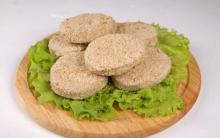How to get conical surfaces on the lathe
On a lathe, the processing of conical surfaces is carried out by one of the following ways:
a) turning the upper part of the caliper;
b) transverse displacement of the tailstock body;
c) using a conical ruler;
d) using a wide cutter.
Machining of conical surfaces by turning the upper part of the caliper
In the corresponding movement, the gap is pressed by the cutter tooth in the same direction as the table offset. This causes the table to make irregular movements that damage the finish of the workpiece and may even break the cutter tooth. Thus, in milling machines equipped with a nut and screw feed system, it is better to use a discordant motion. To do this, simply observe the direction of rotation of the cutter and move the part forward relative to the tooth of the tool.
Like other processes, milling allows you to work on flat, convex, concave or special profile surfaces. But it has the advantage of being faster than the process of turning, filing, smoothing. This is due to the use of a cutter, which is a multi-purpose tool.
When manufacturing on a lathe short outer and inner conical surfaces with a large angle of inclination, it is necessary to rotate the upper part of the support relative to the axis of the machine at an angle α of the inclination of the cone. With this method of operation, the feed can only be done by hand, by rotating the handle of the lead screw of the upper part of the caliper, and only the most modern lathes have a mechanical feed of the upper part of the caliper.
Milling machines are generally classified according to the position of their spindle in relation to the work table - this is the place on the machine where the workpiece is attached. The spindle is the part of the machine on which the tool is mounted. Milling machines are classified in relation to the spindle horizontal, vertical and universal.
A milling machine is horizontal when its spindle is parallel to the machine table. If the spindle is perpendicular to the machine table, we say it is a vertical milling machine. The universal mill has two axes, one horizontal and one vertical. The vertical axis is located at the top of the machine head. The horizontal axis is located on the machine body. The fact that the universal milling machine has two axes allows it to be used both horizontally and vertically.
Processing of conical surfaces by the method of transverse displacement of the tailstock body
To obtain a conical surface on a lathe, it is necessary, when the workpiece is rotated, to move the top of the cutter not parallel, but at some angle to the axis of the centers. This angle must be equal to the angle α of the cone slope. The easiest way to get the angle between the center axis and the feed direction is to shift the center line by shifting rear center in the transverse direction. By shifting the rear center towards the cutter (toward itself), as a result of turning, a cone is obtained, in which the larger base is directed towards the headstock; when the rear center is shifted in the opposite direction, i.e. from the cutter (away from you), the larger base of the cone will be on the side of the tailstock
Do not think that there are only these types of milling machines! There are others who have taken horizontal and vertical milling machines as models, but they do not work in the same way. One of them is a copy milling machine that works with a table and two heads: a probe head and a processing head. As the name suggests, copier milling machine designed for processing, copying this model.
Another type of milling machine is the pantograph milling machine or pantograph. Like a copy milling machine, a pantograph allows you to copy a model. In a pantograph, the transmission of motion is coordinated manually by the operator. This allows you to work with details such as channels and small spokes that are more difficult to obtain with a copy mill.
. Machining tapered surfaces using a tapered ruler
For the processing of conical surfaces with a slope angle of up to 10-12 °, modern lathes usually have a special device called a cone ruler. A scheme for processing a cone using a cone ruler is given.
A plate 11 is attached to the machine frame, on which a tapered ruler 9 is installed. The ruler can be rotated around the pin 8 at the required angle a to the axis of the workpiece. To fix the ruler in the required position, two bolts 4 and 10 are used. The slider 7 slides freely along the ruler, which is connected to the lower transverse part 12 of the caliper with the help of a rod 5 and a clamp 6. In order for this part of the caliper to slide freely along the guides, it is disconnected from the carriage 3 , unscrewing the transverse screw or disconnecting its nut from the caliper.
As for models, they can be made of metal material such as steel and aluminum or resin. The choice of material depends on the number of parts to be copied. Due to their strength, steel models are recommended for a large number copies. If the model is rarely used, such as two- or three-piece copying, it is recommended to use resin.
The cutter is equipped with multi-purpose knives or teeth. This gives it an advantage over other tools: when the teeth are not cutting, they cool down. This helps to reduce tool wear. Tool selection is one of the most important steps in milling. This is mainly due to the type of material being processed.
If you inform the carriage of the longitudinal feed, then the slider 7, captured by the rod 5, will begin to move along the line 9. Since the slider is fastened to the cross slide of the caliper, they, together with the cutter, will move parallel to the line 9. Due to this, the cutter will process a conical surface with a slope angle , equal to the angle α of rotation of the cone ruler.
When choosing a cutter, consider whether it is resistant to the material to be processed. The materials are more or less stable. Thus, a cutter that is suitable for one material may not be suitable for another. Then Menahmus became, as the letter of Eratosthenes says to King Ptolemy Eyergete, the discoverer of conical sections.
The first studies of conics were limited to the original definition of Menaex on a right cone of revolution, and their classification and nomenclature corresponded to the classification of these cones. This approach was almost entirely supported before Euclid and Archimedes, and the current nomenclature was created by Apollonius. Euclid's contribution to conics has been lost. However, there are references to four books of Euclidean work on conics, of which some of the content can be estimated from references in subsequent works, especially those of Archimedes and Pappus.
After each pass, the cutter is set to the cutting depth using the handle 1 of the upper part 2 of the caliper. This part of the caliper must be rotated 90° relative to its normal position, i.e., as shown in fig. 209.
Machining of conical surfaces with a wide cutter
The processing of conical surfaces (external and internal) with a small cone length can be carried out with a wide cutter with a lead angle corresponding to the angle α of the cone slope (Fig. 210). The feed of the cutter can be longitudinal and transverse.
The assumption established by later references is that, like "Elements", Euclidean conics would have been a compilation of existing knowledge, especially the lost work of Aristeas. Although Euclid makes little progress on the specific theorems of conic sections, Euclid sets the foundations for later developments on the subject by Apollonius and Pappus. The former, in addition to studying the disciples of Euclid in Alexandria, used Euclid's four books on conics as the basis for the first books of his own treatise.
In addition, the treatment of areas used to characterize curves by Apollonius was the subject of the sixth book of Euclid's Elements. In fact, his contribution led his biographer Heraclids to accuse Apollonius of stealing Archimedes for his great work, Coniki. The work of Archimedes has the first references to the statements contained in the "conic elements", the knowledge attributed to Euclid and Aristus, and to the definition of the ellipse and parabolic segments, including the establishment of the quadrature of the parabola and the study of surfaces of revolution, including quadratic ones, and their sections in his text "Cones and spheroids".
8.1. Processing methods
When machining shafts, there are often transitions between machined surfaces that have a conical shape. If the length of the cone does not exceed 50 mm, then it is machined with a wide cutter (8.2). In this case, the cutting edge of the cutter must be set in terms of the axis of the centers at an angle corresponding to the angle of inclination of the cone on the workpiece. The cutter is fed in the transverse or longitudinal direction. To reduce the distortion of the generatrix of the conical surface and the deviation of the angle of inclination of the cone, the cutting edge of the cutter is set along the axis of rotation of the part.
However, Apollonius, in his monumental work Conics, consisted of eight books, of which only the last one was lost, which developed generalizations, applied new methods, discovered and proved theorems, and practically exhausted the purely geometric deductions associated with sections of the conic, a feat for which at one time as the "Great Geometer".
Among the feats of Apollonius is that he discovered the possibility of obtaining cones from any cut in any cone, even oblique ones, starting from a cone of general diameter and general section. To do this, it was necessary to take a double circular cone connected by a vertex and two sheets of a hyperbola as one curve.
It should be borne in mind that when processing a cone with a cutter with a cutting edge longer than 10-15 mm, vibrations may occur. The vibration level increases with an increase in the length of the workpiece and with a decrease in its diameter, as well as with a decrease in the angle of inclination of the cone, with the cone approaching the middle of the part and with an increase in the overhang of the cutter and with insufficiently strong fixing. With vibrations, traces appear and the quality of the treated surface deteriorates. When machining rigid parts with a wide cutter, vibrations may not occur, but at the same time, the cutter may be displaced under the action of the radial component of the cutting force, which can lead to a misconfiguration of the cutter to the required angle of inclination. Cutter offset also depends on the machining mode and feed direction.
Further, Apollonius, in his first sentence, establishes relations between conic sections using the method of regions. By setting the rectangle, Apollonius redefines the conic section nomenclature as the rectangle exceeds, equals, or fails the parameter, respectively hyperbola, parabola, and ellipse.
Throughout the treatise, Apollonius develops several theorems on the properties of conics, tangents, intersections, limits, maximum and minimum, and even the evolution of conics. In addition, at the end of the third book, Apollonius geometrically solves the problem of three - and four-line geometric locus, proving that it is a conic, completing the development of Euclid.
Conical surfaces with large slopes can be processed with the upper slide of the support with the tool holder (8.3) rotated by an angle a equal to the angle of inclination of the cone being machined. The cutter is fed manually (with the handle of the upper slide), which is a disadvantage of this method, since uneven feed leads to an increase in the roughness of the machined surface. According to this method, conical surfaces are processed, the length of which is commensurate with the stroke length of the upper slide.
His collections "Compilation" and "Treasury of Analysis" allow indirect knowledge and possible restorations of several lost works of Euclid, such as Porism and Koniki, and the eighth book of Apollonius' Konos. In these collections, the focus-oriented property of the conic appears for the first time, which he attributes to Euclid, but is curiously not presented by Apollonius.
However, Pappus' main contribution was a discussion of the three and four lineage locus problem and their later studies for more lineages. The solution to the problem, as Apollonius concluded, is a conical cut. Papp then tried to work on a generalization of the problem to 5, 6 or more lines, which cannot be built with a ruler and compass alone, and found the curves by approximate methods.
Conical surfaces of great length with an angle of inclination cc = 84-10 ° can be processed with a displacement of the rear center (8.4), the value of which is d = = L sin a. At small angles sin a "tg a, and h \u003d L (D-d) / 2l. If L = /, then /i = (D - -d)/2. The amount of displacement of the tailstock is determined by the scale printed on the end face of the base plate from the flywheel side, and the risk on the end face of the tailstock housing. The division price on a scale of 1 mm. In the absence of a scale on the base plate, the tailstock offset is read off the ruler attached to the base plate. The tailstock displacement value is controlled using a stop (8.5, a) or an indicator (8.5, b). The back of the cutter can be used as a stop. The stop or indicator is brought to the tailstock quill, their initial position is fixed by the dial of the cross feed handle or by the indicator arrow. Tailstock is displaced by an amount greater than h (see 8.4), and the stop or indicator is moved (with the cross feed handle) by an amount h from the original position. Then the tailstock is shifted towards the stop or indicator, checking its position by the arrow of the indicator or by how tightly the strip of paper is clamped between the stop and the pi-zero. The position of the tailstock can be determined from the finished part or a sample that is installed at the centers of the machine.
However, his contemporaries failed to advance in their work. Thus, the correspondence between curves and equations was born in accordance with the Cartesian method. Dictionary of scientific biographies. Introduction In: Apollonius Pergi: A Treatise on Conic Sections. Descartes' construction to solve the Pappus problem.
His solution, geometrically, was based on the proportions of several triangles given in the figure, and on the possible proportions that can be obtained from there. However, the development of the solution represents several aspects of the new geometric approach, the germ of its analytical geometry.
Then the indicator is installed in the tool holder, brought to the part until it touches the tailstock and moved (by the caliper) along the generatrix of the part. The tailstock is displaced until the deviation of the indicator needle is minimal along the length of the generatrix of the conical surface, after which the tailstock is fixed. The same conicity of parts in a batch processed by this method is ensured with minimal deviations of workpieces in length and center holes in size (depth). Since the displacement of the centers of the machine causes wear of the center holes of the threads, the conical surfaces are pre-treated, and then, after correcting the center holes, the final finishing is performed. To reduce the breakdown of the center holes and the wear of the centers, it is advisable to use centers with rounded tops.
Cutting and rolling complete the machining operations; the workpieces are machined with little additional thickness relative to the nominal size and then subjected to "burning" pressure which destroys the surface layers. The burner can be equipped with tapered rollers inclined about its axis, and can also use an elastically fixed diamond. Lubrication is very important for the success of the operation.
Rolling and rolling improves gloss, accuracy, hardness and strength, and roller surfaces are more resistant to fatigue and wear better than ground surfaces and behave as if they were already working. sometimes less than impregnated surfaces. Cold drawn steels should never be cut because they are already hardened.
Conical surfaces with a = 0-j-12° are processed using copiers. A plate / (8.6, a) with a copy ruler 2 is attached to the frame of the machine, along which the slider 5 moves, connected to the caliper 6 of the machine with a rod 7 using clamp 8. For free movement of the caliper in the transverse direction, it is necessary to disconnect the transverse feed screw. With the longitudinal movement of the caliper 6, the cutter receives two movements: longitudinal from the caliper and transverse from the copier ruler 2. The angle of rotation of the ruler relative to axis 3 is determined by the divisions on the plate /. The ruler is fixed with bolts 4. The cutter is fed to the cutting depth with the handle for moving the upper slide of the caliper.
These operations produce residual compressive stresses that reduce the risk of cracking, especially in sensitive areas such as the edges of crankshaft trunnions and crankshafts. Since Bailby's work is known, mechanical polishing causes melting, or at least softening. high points surfaces of parts and that the material of the latter fills the valleys.
New methods include laser and electron beam processing. Laser hardening is especially promising, since it eliminates deformation and subsequent machining blanks. It creates residual compressive stresses that reach at least 60% of the material's yield strength. The infected depth is much greater, up to 8 mm. For example, on titanium parts, it was allowed to obtain an allowable load increase of 25% versus 14% for prestress shot peening.
The processing of the outer and end conical surfaces 9 (8.6, b) is carried out according to the copier 10, which is installed in the quills of the tailstock or in the turret of the machine. In the tool holder of the transverse caliper, a fixture 11 with a copy roller 12 and a pointed through cutter is fixed. During the transverse movement of the caliper, the copier pin, in accordance with the profile of the copier 10, receives a longitudinal movement by a certain amount, which is transmitted to the cutter. The outer conical surfaces are machined with through cutters, and the inner ones with boring cutters.
There are many uses: machining woodworking tools gives them a good grade for the wear resistance of carbide tools. The thread that was changed with each extrusion is realized. This statement is especially true when the supplier is entrusted with part of the design of the product he is delivering and therefore must be able to fulfill the functional need identified as precisely as possible with the customer, and then be able to ensure that the parts he supplies can perform the expected functions by verifying them through measurable and reproducible geometric measurements made on suitable means.
To obtain a conical hole in a solid material (8.7, a-d), the workpiece is pre-processed (drilled, reamed, bored), and then finally (deployed, bored). Deployment is performed sequentially with a set of conical reamers (8.8, a-c). Previously, a hole is drilled in the workpiece with a diameter of 0.5-1.0 mm less than the diameter of the guide cone of the reamer. Then the hole is processed sequentially with three reamers: the cutting edges of the rough reamer (the first one) are in the form of ledges; the second, semi-finishing sweep removes the irregularities left by the rough sweep; the third, finishing reamer has solid cutting edges along the entire length and calibrates the hole.
Conical holes of high accuracy are pre-treated with a conical countersink and then with a conical reamer. To reduce metal removal with a countersink, the hole is sometimes processed in steps with drills of different diameters.
8.2. Center hole machining
In parts such as shafts, it is often necessary to make center holes, which are used for further processing of the part and for restoring it during operation.
The center holes of the shaft must be on the same axis and have the same dimensions at both ends of the shaft, regardless of the diameters of the end journals of the shaft. At
Failure to comply with these requirements reduces the accuracy of processing and increases the wear of centers and center holes.
The most common center holes with a cone angle of 60 ° (8.9, a; table. 8.1). Sometimes when processing large heavy workpieces, this angle is increased to 75 or up to 90 °. The top of the working part of the center should not rest against the workpiece, therefore, the center holes always have a cylindrical recess of small diameter d at the top. To protect the center holes from damage during repeated installation of the workpiece in the centers, center holes with a safety chamfer with an angle of 120 ° (8.9, b) are provided.
8.10 shows how the rear center of the machine wears out when the center hole is not made correctly in the workpiece. With misalignment a of the center holes and misalignment b of the centers (8.11), the workpiece is based skewed, which causes significant shape errors outer surface details.
Center holes in workpieces are processed in various ways. The workpiece is fixed in a self-centering
chuck, and a drilling chuck with a centering tool is inserted into the tailstock quill.
Center holes with a diameter of 1.5-5 mm are processed with combined center drills without a safety chamfer (8.12, d) and with a safety chamfer (8.12, d). Center holes of other sizes are processed separately, first with a cylindrical drill (8.12, a), and then with a single-toothed (8.12, b) or multi-toothed (8.12, e) countersink. Center holes are machined with a rotating workpiece and manual feed of a centering tool. The end face of the workpiece is pre-cut with a cutter. Required size the center hole is determined by the deepening of the centering tool, using the limb of the tailstock flywheel or the scale (stop) of the quill. To ensure the alignment of the center holes, the workpiece is pre-marked, and during centering it is supported with a steady rest. Center holes are marked with a marking square (8.13). The intersection of several scratches determines the position of the center hole at the end of the shaft. After marking, the center hole is punched.
The measurement of the taper of the outer conical surfaces can be performed with a template or a universal goniometer. For more accurate measurements of the cones, sleeve gauges are used. With the help of a sleeve gauge, not only the angle of the cone is checked, but also its diameters (8.14). On the treated surface of the cone is applied
8.14. Gauge-sleeve for checking external cones (a) and an example of its application (b)
2-3 risks with a pencil, then put the gauge-sleeve on the measured cone of the part, slightly pressing along the axis and turning it. With a correctly executed cone, all risks are erased, and the end of the conical part is between marks A and B of the sleeve gauge.
When measuring conical holes, a plug gauge is used. The correctness of the processing of the conical hole is determined in the same way as when measuring the outer cones by the mutual fit of the surfaces of the part and the plug gauge.










What to do with a girl on a first date?
Grams or grams - which is correct?
How to solve motion problems IV
Winter landscapes of outstanding artists How to draw a light landscape in winter with a pencil for beginners
Solving logarithmic and exponential inequalities by the rationalization method